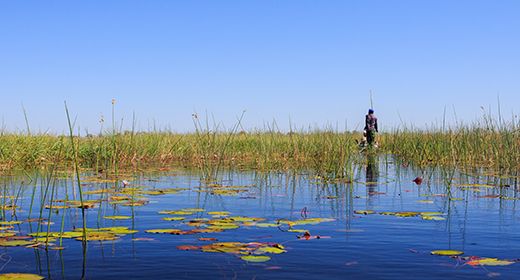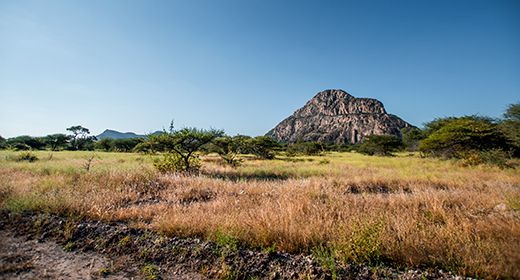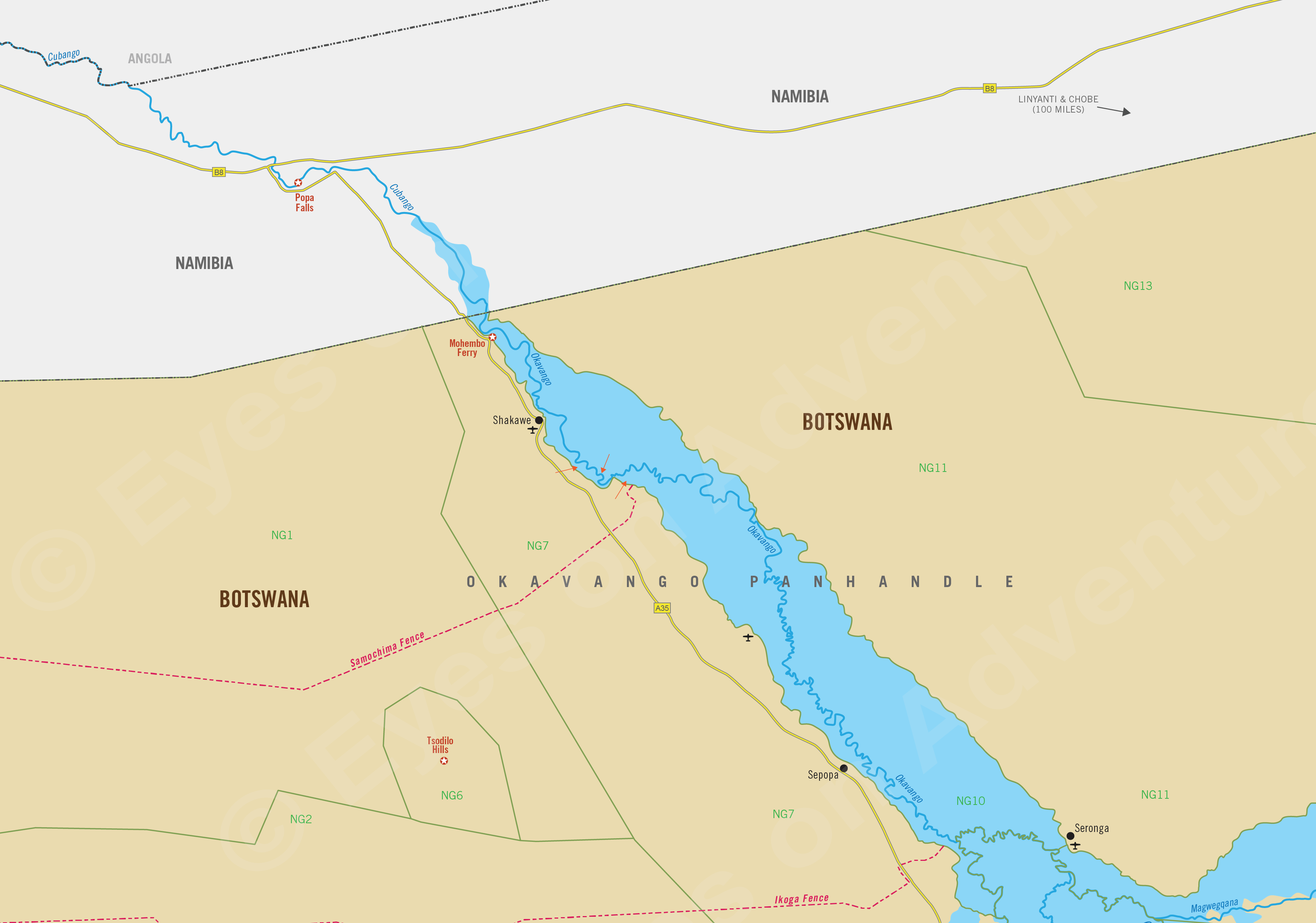Okavango Panhandle
(incl. Tsodilo Hills)
Region Links: Central Kalahari, Linyanti & Chobe, Makgadikgadi, Okavango Delta, Okavango Panhandle, Tuli Block
Highlights
- Visit Tsodilo Hills to see ancient and beautiful rock art paintings
- Catch a tigerfish in one of the world's most beautiful wildernesses
- Take a mokoro excursion to explore the Okavango River
- Relax and enjoy the peaceful solitude of the Okavango
EOA Recommends: Nxamaseri Island Lodge
Viewed from far above, the Okavango has the rough shape of a frying pan, with the Okavango River flowing down the handle and then spreading out to form the main Delta; thus the region is known as the Panhandle.
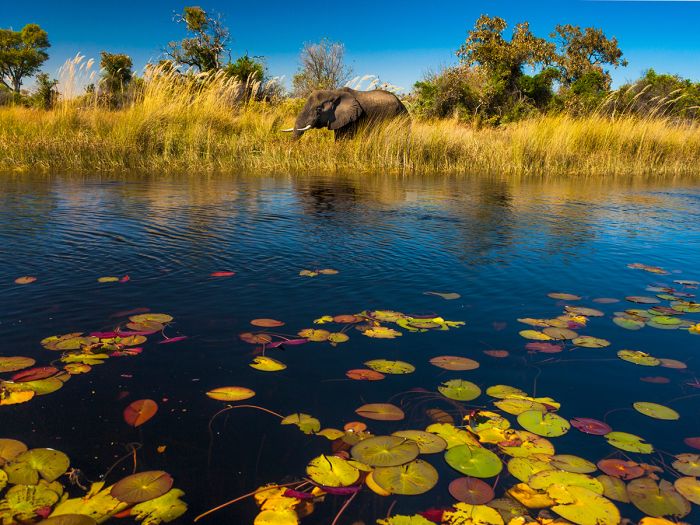
Elephant along the Okavango River
While not the big game destination that the Okavango Delta is, the Panhandle offers a glimpse of what the entire region was like 50 years ago. A few safari camps and small villages are all that is here, besides papyrus beds, clear blue water, and unspoiled wilderness.
To the west of the river lies the Tsodilo Hills, a UNESCO World Heritage Site, with thousands of ancient rock art paintings of great historical significance.
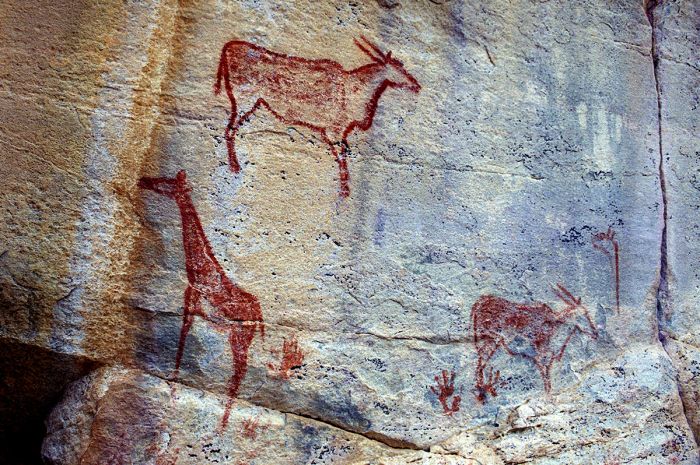
Rock art in the Tsodilo Hills, Botswana
Hippos, crocodiles, excellent birding, relaxing mokoro excursions, superb fishing, and true wilderness are the highlights here. Few tourists make it here, but a relaxing visit to one of the camps in the Panhandle is a great option if combined with a safari in the Delta.
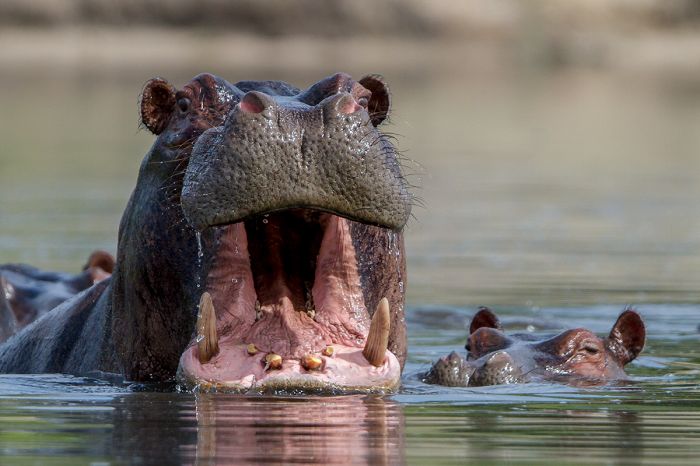
Hippos in the Okavango, Botswana
Read More...
Fishing, Mokoros, Okavango River Panhandle, Tsodilo Hills
Okavango River Panhandle
The Okavango River carries rain water from the highlands in Angola south across the Caprivi Strip of Namibia and into northern Botswana. This water is what creates the Okavango Delta. For the first 60 miles (100 kms), steep banks contain the river water from spreading more than 6.4 miles (12 kms) as it travels southeast down the Panhandle.
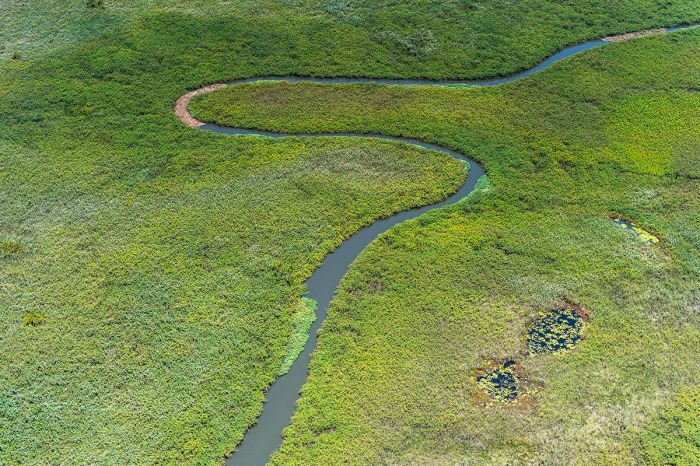
The Okavango River meanders through papyrus in The Panhandle
The Panhandle is the Okavango as it was 50 years ago, with only three small settlements and a few camps. If you are looking catch some tigerfish or add on a few days after an Okavango Delta safari, then the Panhandle is a relaxing place to enjoy a beautiful wilderness in complete privacy.
The Panhandle is not the place to go to see Africa's Big Five or other land-based wildlife. It is a place of permanent water, floating papyrus, water lilies, reed beds and peaceful mokoro excursions on the Okavango River.
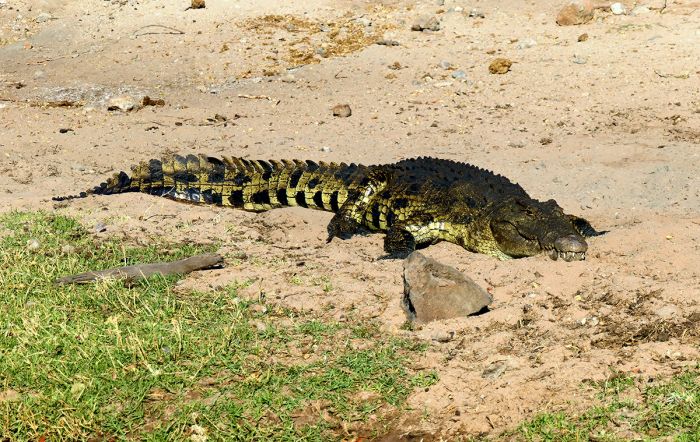
Crocodiles are very common along the Okavango Panhandle
Hippos, crocodiles, sitatunga and red lechwe antelopes, and some elephants are all a sure bet, but lions, leopards and cheetahs will not likely be seen. The birding is excellent, with African fish eagles, carmine bee-eaters, Marsh Harriers, and African skimmers all very common here.
FISHING
Fishing is the main activity offered in the Panhandle and anglers from around the world come here to catch tigerfish, bream, and barbel (catfish). The tigerfish season runs from September thru June and the barbel run from early August thru the end of November.
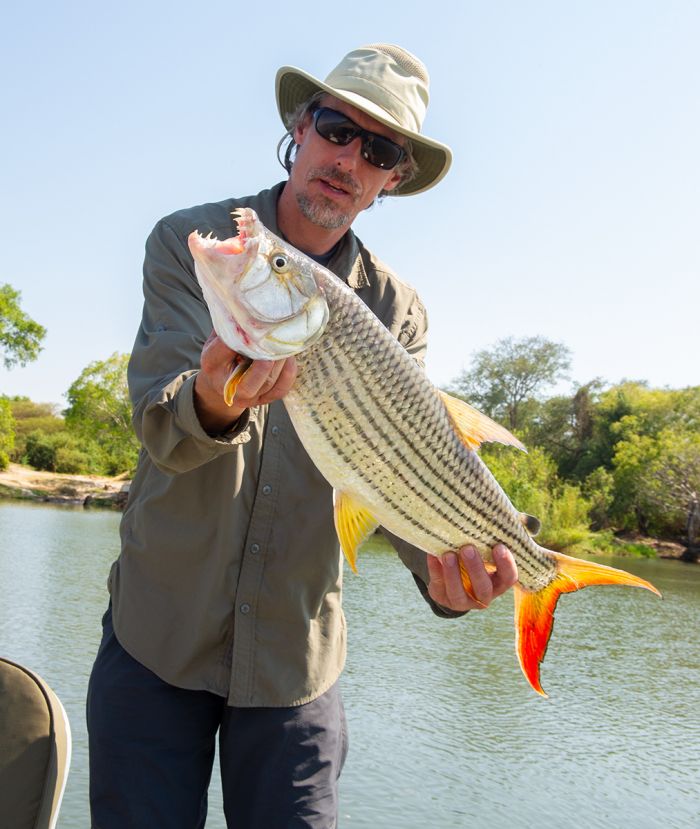
The tigerfish is prized by anglers in the Okavango (Copyright © James Weis)
Mokoros
Mokoros are the local version of the canoe, but they are propelled by a long pole pushed by a 'poler' standing in the rear. A mokoro excursion takes you gliding silently thru the calm waters and papyrus and it is undoubtedly one of the great experiences of the Okavango.
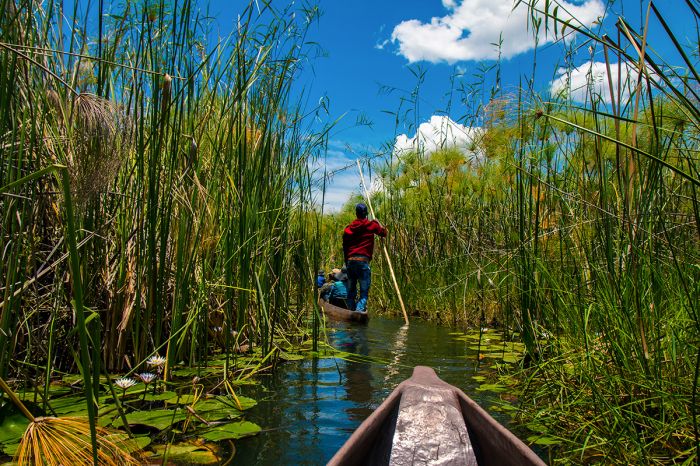
Mokoro safari in the Okavango Panhandle
Tsodilo Hills
The Tsodilo Hills, a UNESCO World Heritage Site (declared in 2001), lies 25 miles (40 kms) west of the Okavango River and the Panhandle. The site has great historical significance, as there are ancient rock paintings of animals and people, some dating back as much as 24 000 years ago.
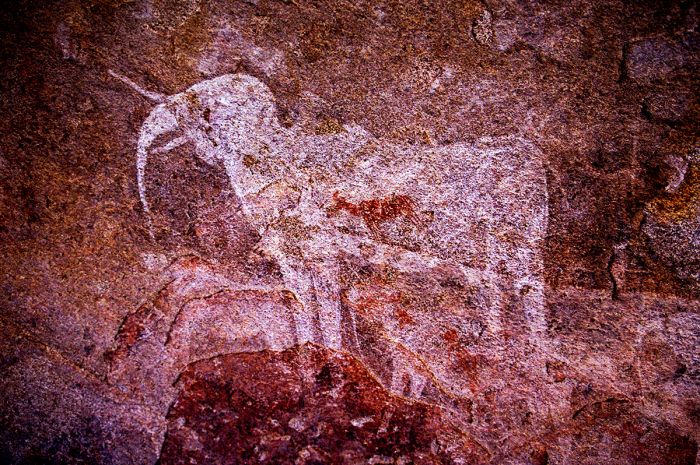
Rock painting at Tsodilo Hills
The are four main hills at Tsodilo, the highest one reaching 1 400 meters (4 600 feet), making it one of the highest points in Botswana. The hills are commonly called by their local names, "Male" (the highest), "Female", "Child", and "North".
Local people have lived at Tsodilo for as much as 60 000 years, making it one of the world's oldest known human settlements in Botswana. There are 4 500 rock paintings across the numerous caves and rock shelters. Early Bantu people were here first and then, in the last 1 000 years or so, the San people inhabited the area.
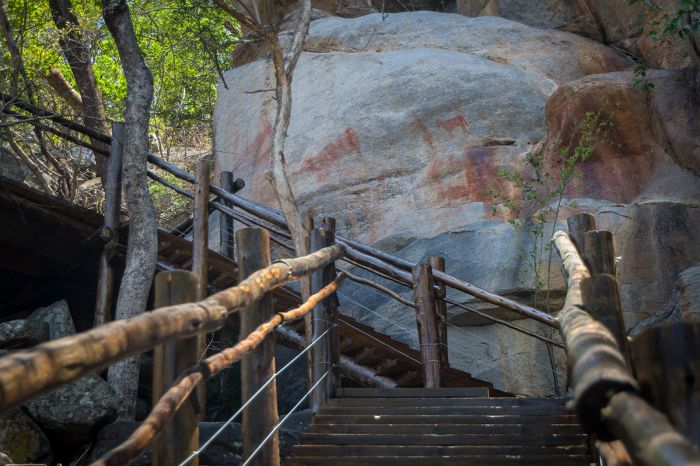
Walkway leading through some of the rock art at Tsodilo
Tsodilo is a remarkable and spiritual place and the San people believe that the spirits of their ancestors reside here and that their gods live in the caves of the Female Hill. They also believe that these gods will bring misfortune to anyone hunting or causing death to animals near the Hills. As told in The Lost World of the Kalahari, by Laurens van Der Post, his party ignored this advice and suffered considerable consequences.
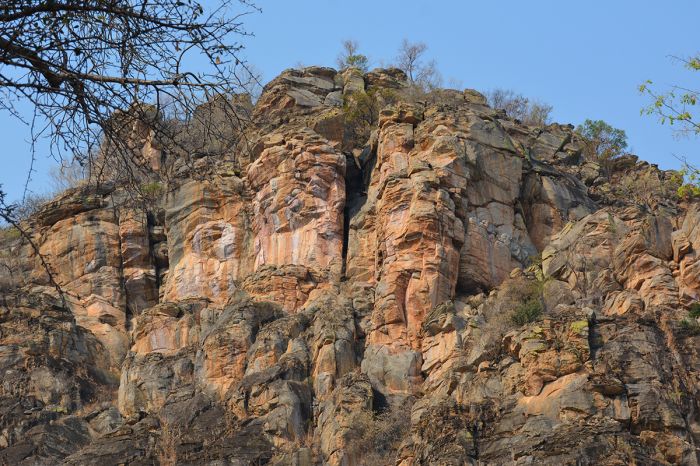
"Female" Hill cliff face at Tsodilo Hills
Day trips are possible from camps along the Panhandle or out of Shakawe or Maun (3+ hours drive from Maun). There are some basic camp sites and guided 2-3 night trips are also available.
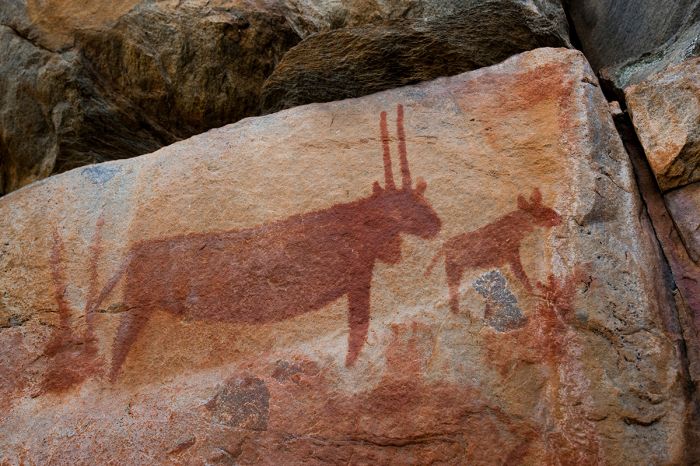
Rock painting at Tsodilo Hills
A few days spent in the Panhandle at the end of your Botswana safari is a great way to relax before heading home.
Great Good Fair Poor
- Jan
- Feb
- Mar
- Apr
- May
- Jun
- Jul
- Aug
- Sep
- Oct
- Nov
- Dec
As with all of northern Botswana, the rains occur here during the summer. The first rains come sometime in November and continue into March or early April. The heaviest rains fall in January and February, while November and December experience only sporadic downpours.
By May the weather turns dry as winter approaches. Morning temperatures range from around 69°F/20°C to 91°F/33°C in the afternoons.
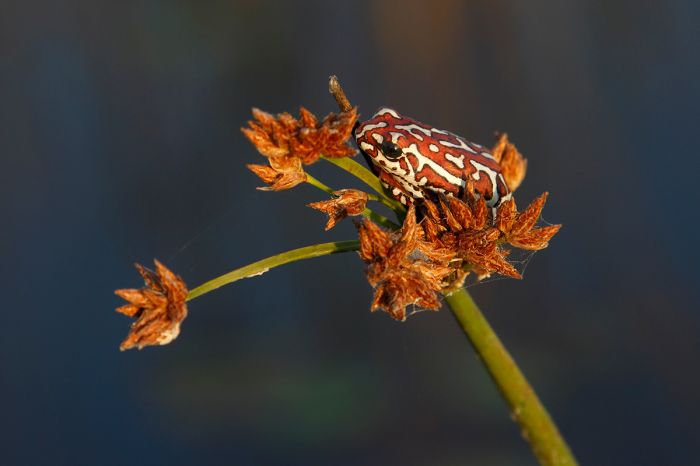
A painted reed frog in the Okavango
The dry months are May thru October. Early morning temperatures can be very chilly at 30-40°F (-1 to 5°C) while overnight temps can drop below freezing. However, afternoons in the winter warm up to 75-80°F (24-26°C).
In terms of tourists, the Panhandle is never crowded, as most visitors to Botswana only spend time in the major game reserves.
For anglers, the tigerfish season runs from September thru June and the barbel (catfish) run from early August thru the end of November.
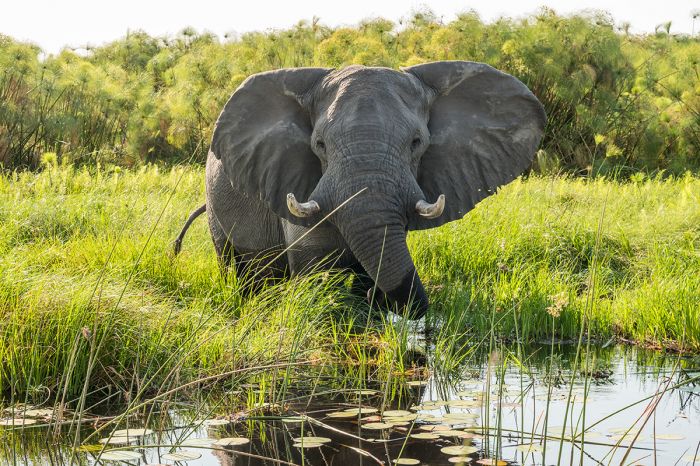
An elephant along the Okavango River




